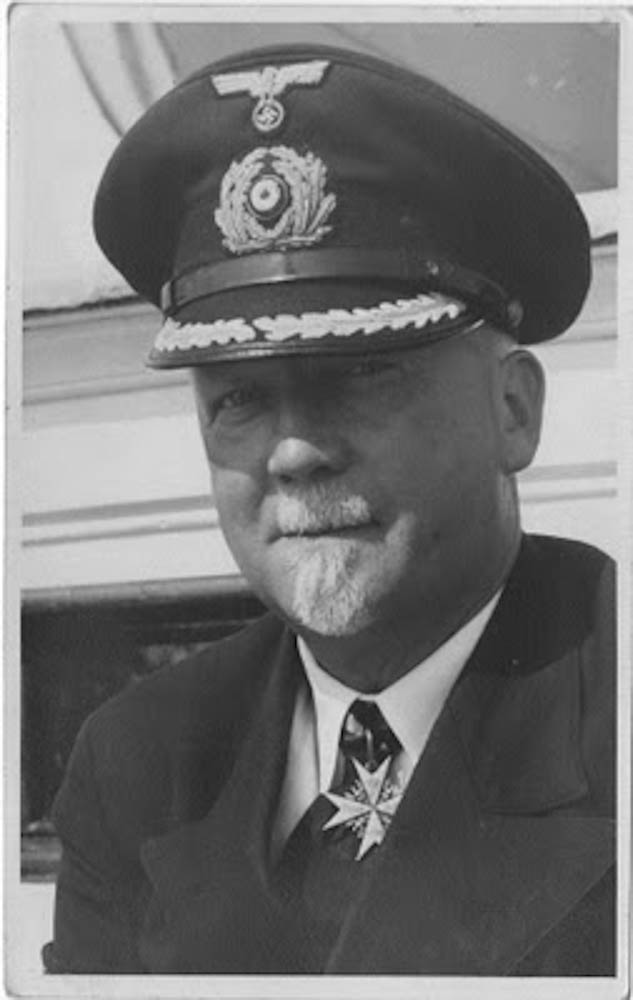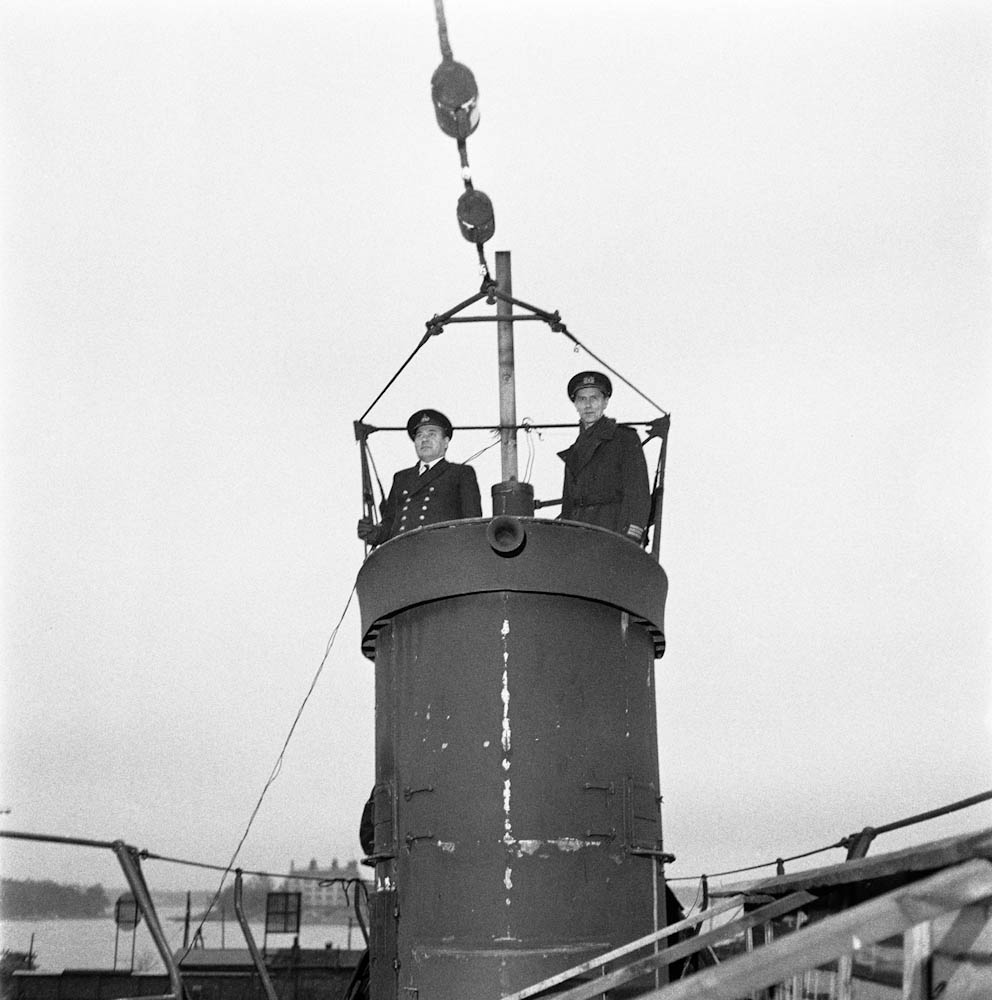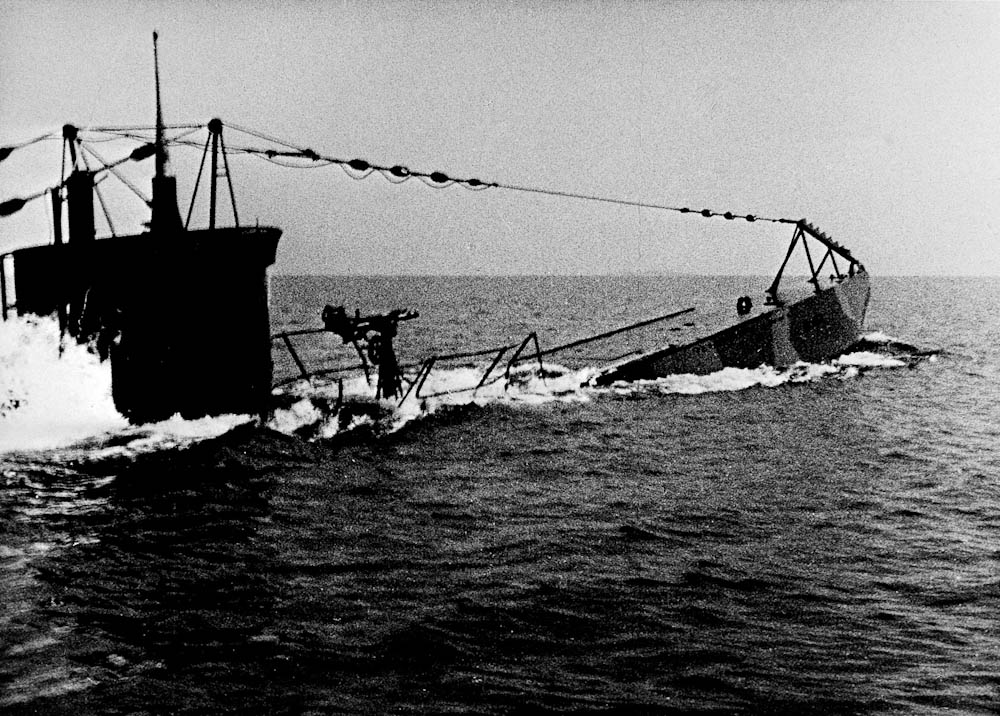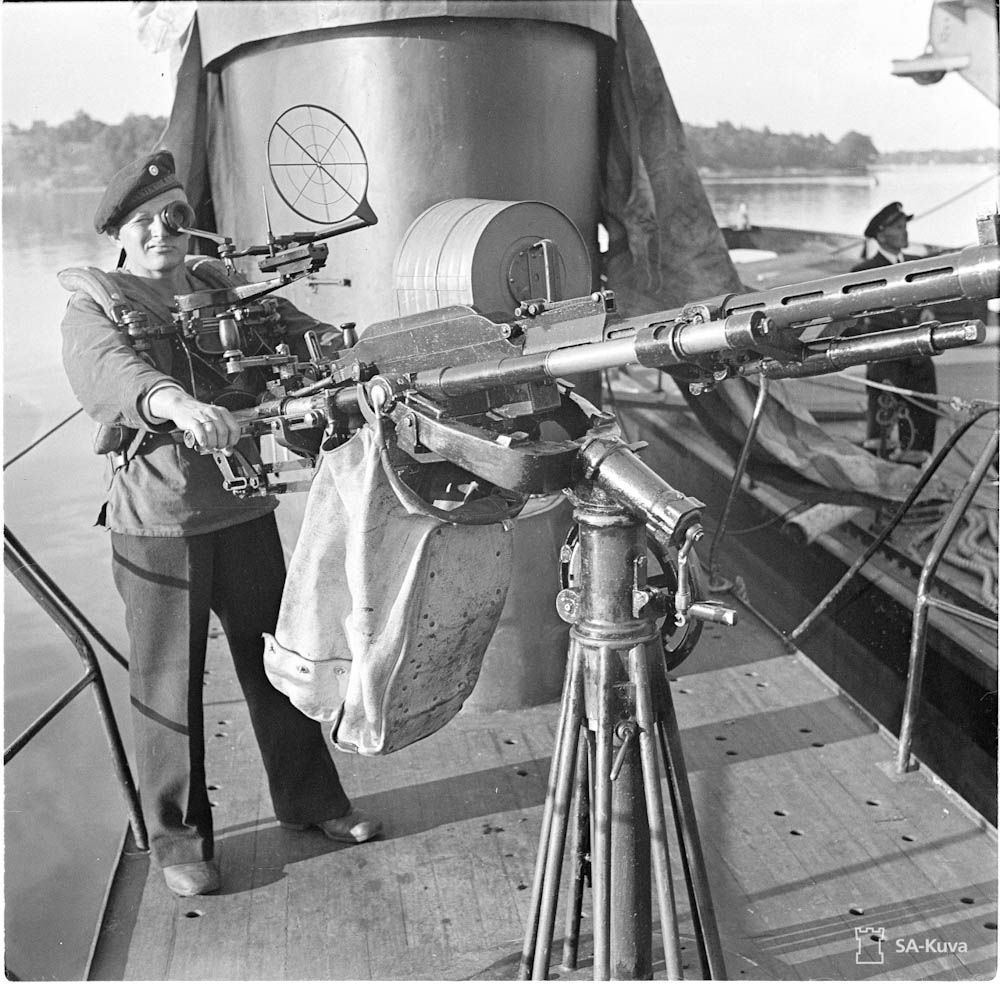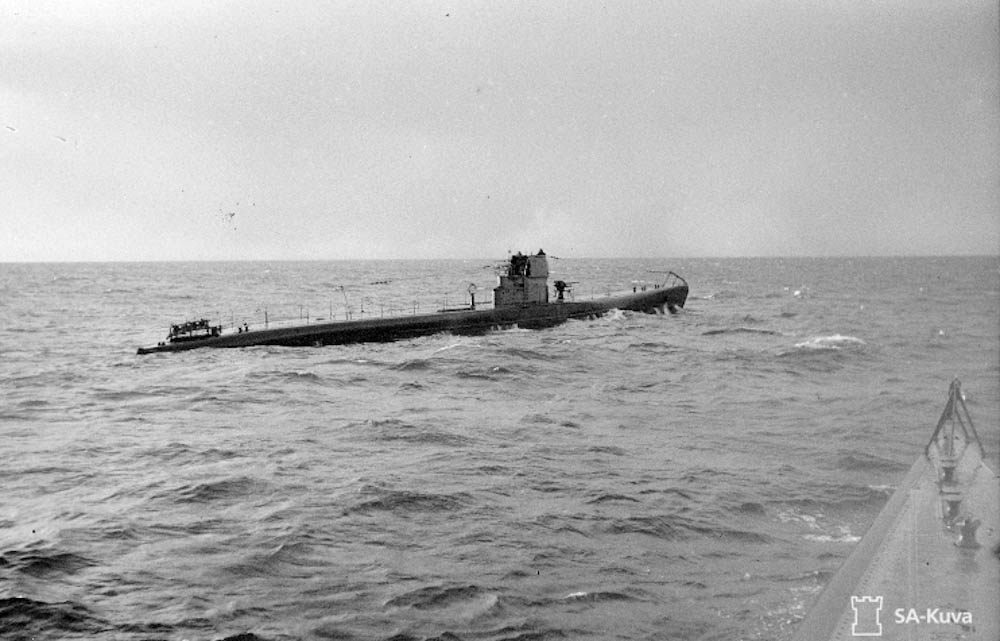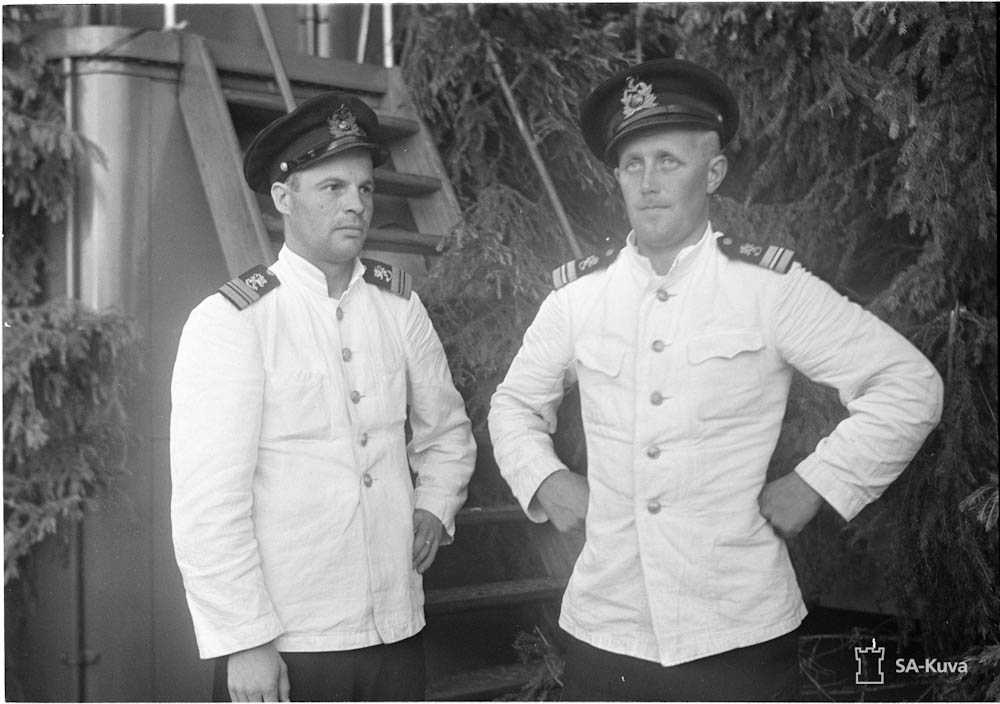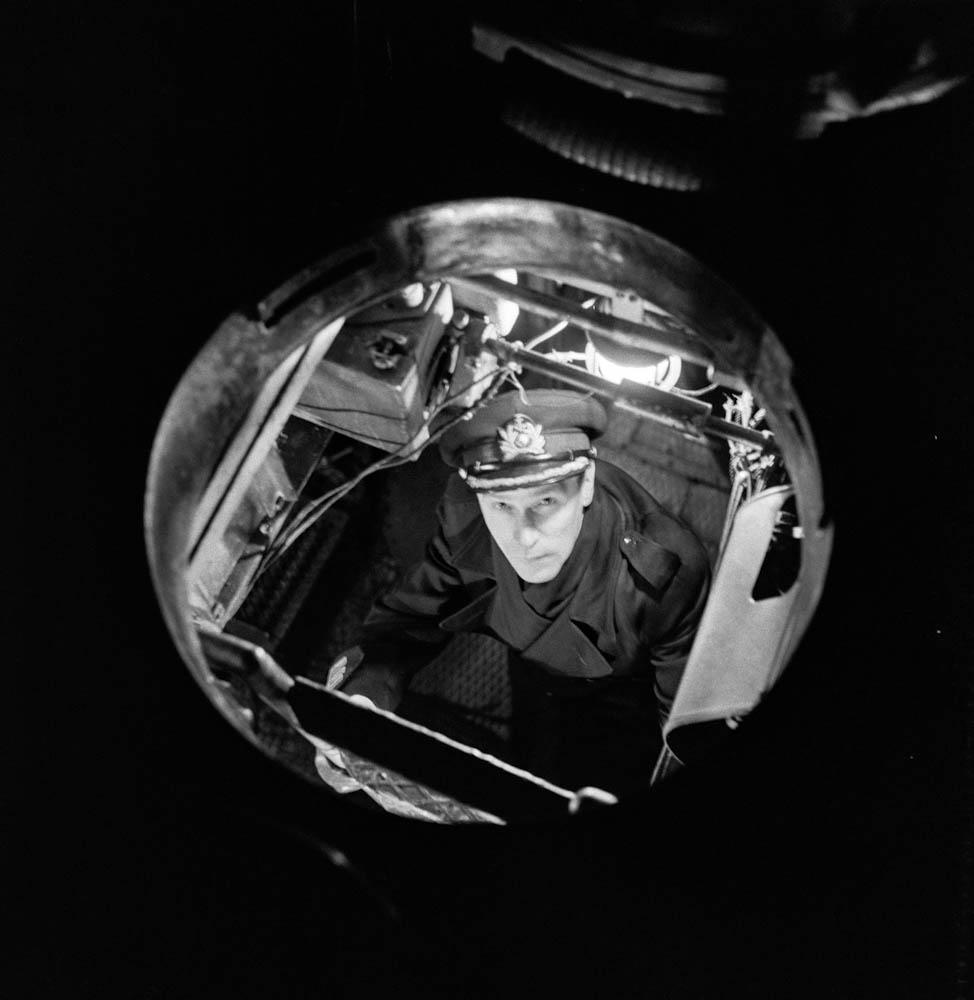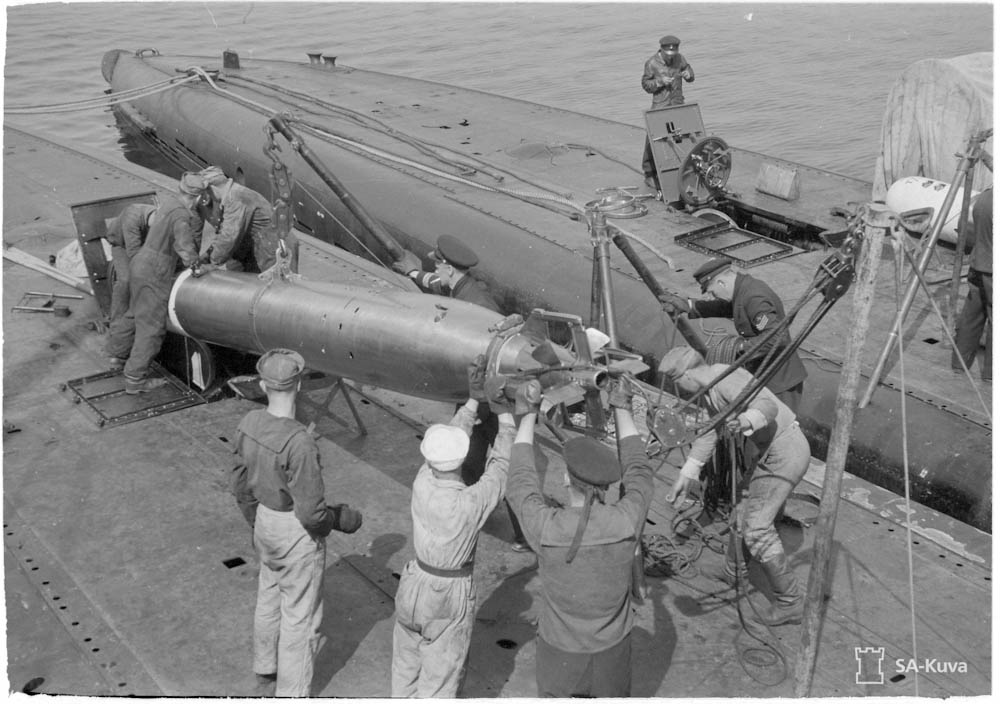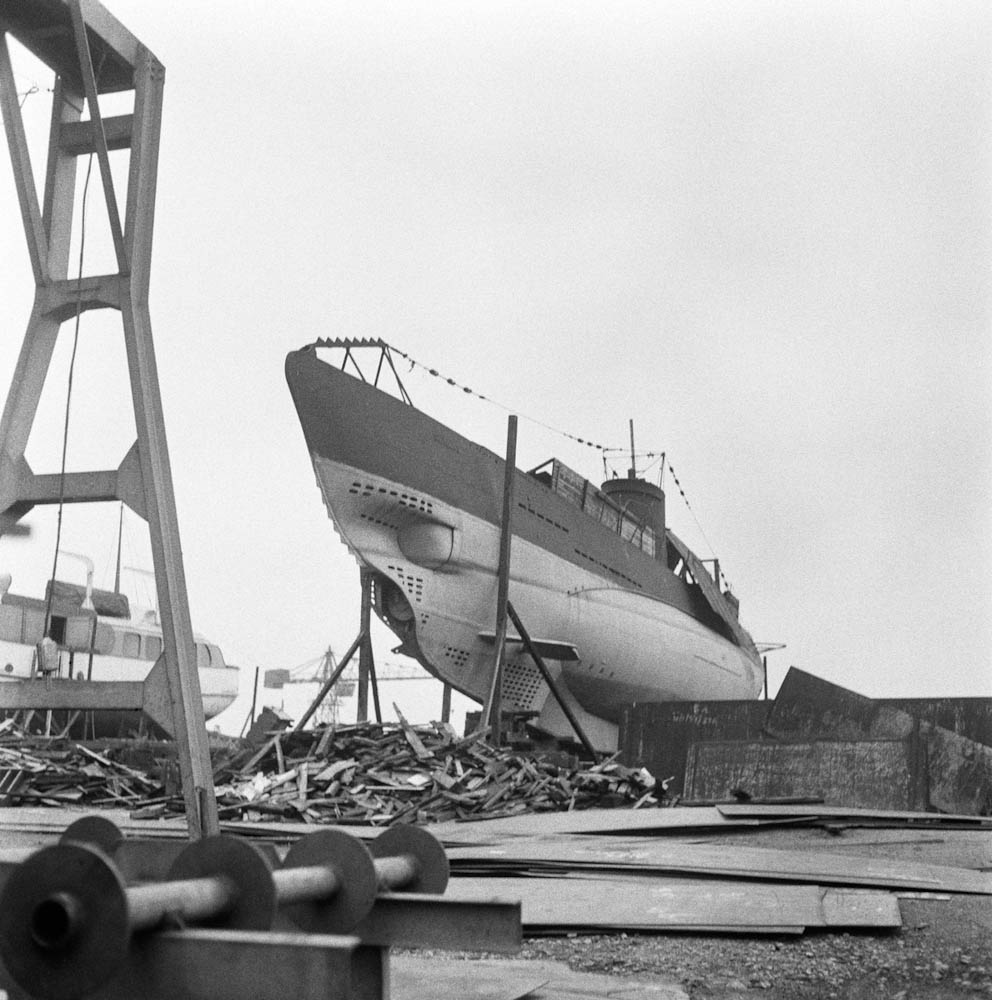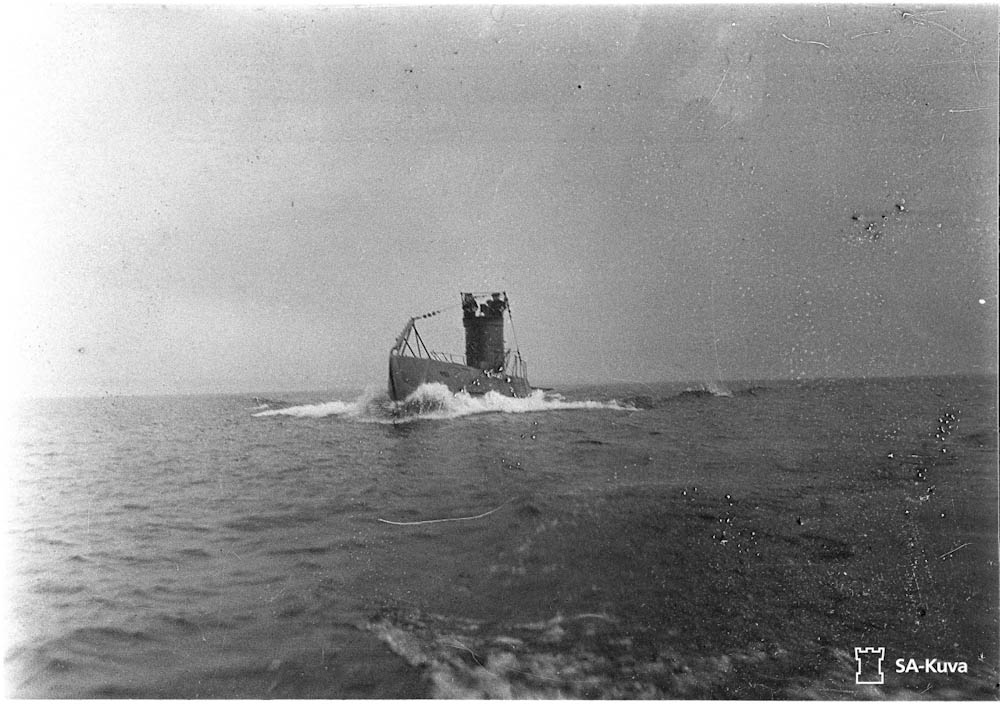
Submarine ""Vesikko"" in motion.
The watershed is a submarine launched on 10.5. 1933 in Turku. Until 1936, the boat was only named CV 707. The Dutch engineering firm Ingenieurskantoor voor Scheepsbouw had ordered the vessel in October 1930 as a prototype commercial submarine. The Finnish state bought it in 1936, and it was named Vesikko.
Unlike the other submarines of the Finnish Navy, Vesikko was not part of the Finns' plans, but was part of Germany's secret naval rebuilding program. The goal of the Germans was to create a completely new type of movement that would represent new technology and not the standards of the First World War. For this, two test models were built, E1 in Spain and CV 707 in Finland. The latter was later chosen as the first ship type of the new fleet. The construction of both ships was financed by Reichs Marine.
The German Navy's secret liaison officer in Finland was Commander-in-Chief Karl Bartenbach, whose official designation was naval expert of the Finnish Defense Forces. Under his leadership, the 496-ton Vetehis class designed by IvS and the 100-ton Saukko, which was to be used in Laatoka, were built in Finland. The German navy had to design a 200-250-ton ship that would still match the 496-ton Vetehis-class submarines in terms of impact.
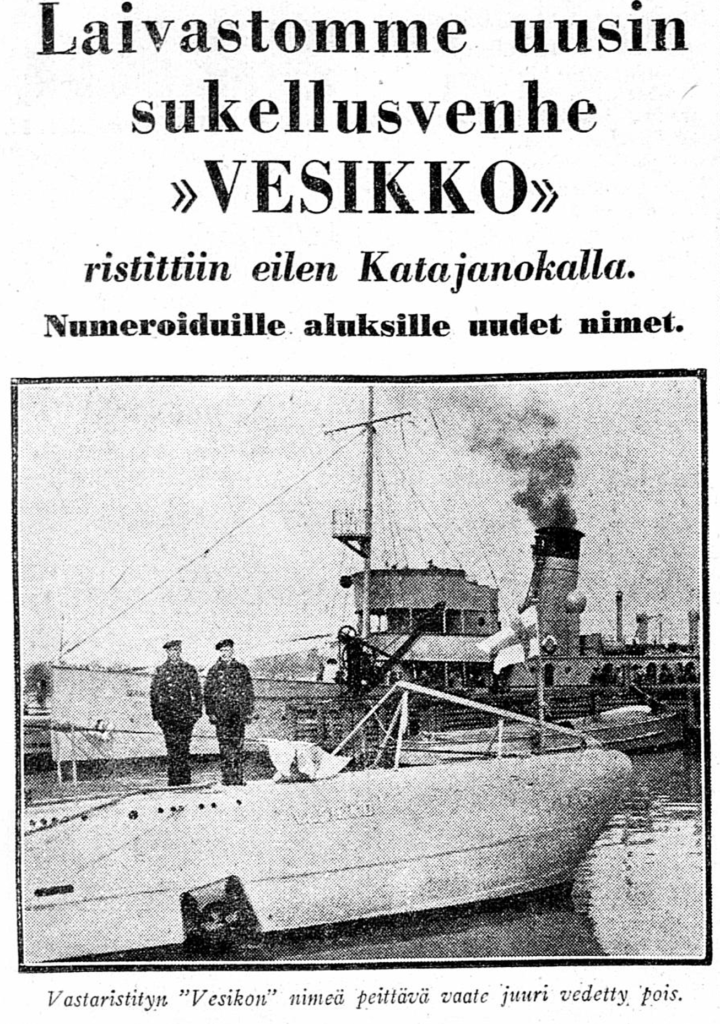
The decision to build Vesiko was made in 1930 after several internal government negotiations. Since the Liliput project was against the Treaty of Versailles, Germany was not mentioned in the documents and it was decided that the submarine should only be sold to countries belonging to the League of Nations and entitled to the weapon in question. The Finnish state got the right of first refusal on the boat.
The construction of CV-707 started in 1931 at the Crichton-Vulcan shipyard in Turku, where Vetehis class boats were also built. Technically, the boat became the most advanced of its time: its diving depth was twice that of previous German submarines, and its hull could be built without riveting by electric welding, which increased pressure resistance, reduced leaks and speeded up construction. The Germans tested Vesikko in the Turku archipelago in the sailing seasons of 1933 and 1934.
Operations during the war / In connection with the general launching of operations in October 1939, Vesikko, Vesihiisi and Saukko were assigned to surveillance duties in the western Gulf of Finland. After the outbreak of the Winter War, Vesikko initially patrolled off Hanko. On December 18, it was ordered to move to Vyborg Bay to Koivisto, where a battle was going on between the Saarenpää fort and two Soviet battleships. However, by the time Vesiko arrived in Viipur Bay the following evening, the battle had already ended. The severe frost made submarine operations difficult, and Vesikko returned to the shipyard in Helsinki on December 22, ending its participation in the Winter War.
As masters of Vesiko during the war:
- lieutenant Kauko Pekkanen (1939)
- captain lieutenant Olavi Aittola (1940 and 1941)
- captain lieutenant Antti Leino (1942)
- Captain Lieutenant Pentti Airaksinen (1942)
- captain lieutenant Eero Pakkala (1943)
- captain lieutenant Olavi Syrjänen (1943)
- captain lieutenant Lauri Parma (1944)

